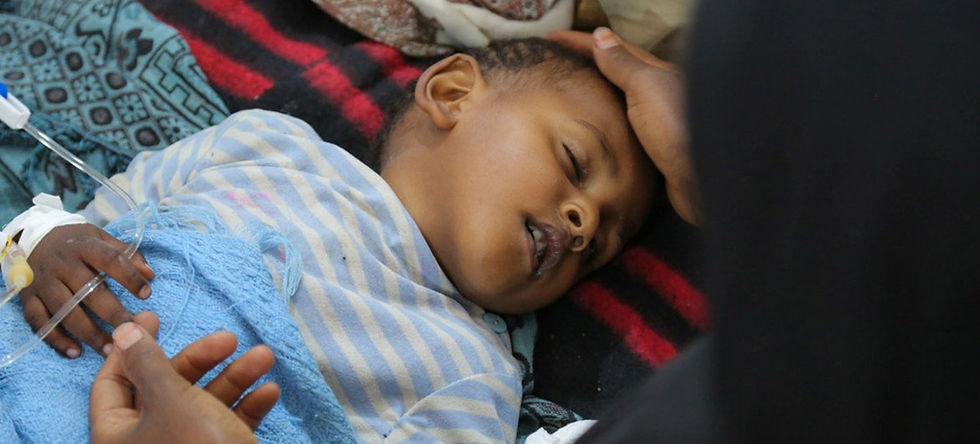Cholera outbreak escalates in Yemen
- المصدر: فريق تحرير يمن واتشر
- Jun 5, 2024
- 2 min read
An alarming rise in cholera cases in Yemen: children under five are most at risk

A child infected with cholera in Yemen, 2017. UNICEF.
Summary:
There were 2,458 suspected cases of cholera recorded between January and April 2024, a 50% increase from the last quarter of 2023.
The highest infection rates are concentrated in Lahj and Aden, while the situation is more serious in Houthi-controlled areas.
Children under five are the most affected group, exacerbating the risk of acute malnutrition.
Yemen is experiencing a worrying increase in cholera cases, with the Integrated Disease Early Warning System (IDEWS) of the Ministry of Public Health and Population reporting 2,458 suspected cases between January 1 and April 21, 2024, with 13% confirmed. The highest incidence rates are concentrated in Lahj and Aden governorates, while the total number of cases in April rose by more than 50% compared to those recorded from October to December 2023.
The infection rate peaked in the week starting April 21, with 1,049 suspected cases recorded, exceeding the late 2023 outbreak peak but remaining below the 2019 outbreak peak.
Available information indicates that the situation in Houthi-controlled areas is more severe, with over 11,000 suspected cases and 75 cholera-related deaths reported since October 2023, compared to around 3,200 cases in government-controlled areas.
Internally displaced persons (IDPs) living in crowded conditions with poor sanitation are more vulnerable to the disease, while children under the age of five are the most affected group, exacerbating the risk of severe acute malnutrition among them.
Addressing the cholera outbreak in Yemen requires a concerted international effort and a comprehensive approach focused on improving public sanitation, strengthening healthcare systems, and alleviating human suffering.
Measures to improve access to clean water and sanitation include increasing investments in water and sanitation infrastructure projects, particularly in the most affected areas. Damaged health facilities should also be rehabilitated and provided with the necessary equipment and medicines, and medical personnel should be trained in cholera diagnosis and treatment. Finally, strengthening healthcare systems includes, but is not limited to, rehabilitating conflict-damaged health facilities and providing them with the necessary equipment and medicines.
Among the 17 Sustainable Development Goals, Goal 6, "Ensure availability and sustainable management of water and sanitation for all," is the most crucial in combating cholera. The spread of cholera is closely linked to the lack of access to clean water and adequate sanitation. The cholera-causing bacteria come from human waste and can easily spread through contaminated water or food.
With international cooperation and a commitment to achieving the Sustainable Development Goals, cholera outbreaks can be controlled and prevented in the future.
@UNHCR @OCHA Yemen @YemenRelief @KSRelief
@SaveChildrenYE @UNICEFmena



Comments